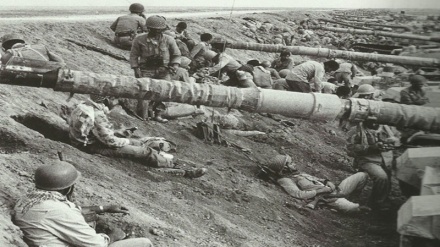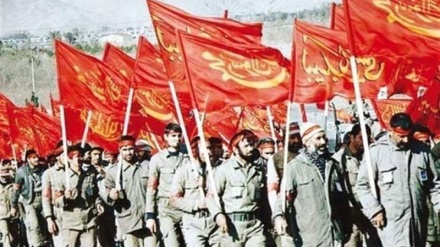Glimpses of Epic of 8-Years Holy Defense (72)
In last week’s episode of “Glimpses of Epic of 8-Year Holy Defense”, we talked about various aspects of the victorious Val-Fajr 8 operation and seizure of the strategic Iraqi peninsula and city of Faw by Iran’s Muslim combatants. This week also we will continue to focus on other aspects of this operation.
Val-Fajr 8 operation took place after liberation of the city of Khorramshahr from occupation of Saddam’s Ba’thist forces during the Bayt al-Moqaddas operation. Then followed the Karbala 5 operation and after that ValFajr 8 operation. These operations are considered the peak of creativity, ingenuity and engineering designs of the Iranian Muslim combatants during the 8-year war imposed by the US through Saddam. But ValFajr 8 operation surpassed all these achievement in terms of the complexity, planning and strategic situation of the region, which is separated by a body of water from Iran.
It could be said that ValFajr operation could not have been possible, except for the success achieved by Iran during the Khybar and Badr operations, which paved the way for the entry of the Iranian combatants into the Hour al-Howeizah region and the capture of Majnoon islands. Now it was possible for the Iranian combatants to cross the Arvandroud waterway and take the Iraqi port of Faw at the headwaters of the Persian Gulf. This was proof of the prowess of commanders of the Islamic Revolution Guards Corps (IRGC) in 1985 which brought further victories to the Islamic Republic of Iran.
Crossing the Arvand River was an innovative tactic during the imposed war that surprised Saddam as well as western military tacticians, in view of the strong water currents, and the ability of the Iranian combatants to overcome these natural hurdles.
Thousands of Iranian combatants managed to cross into Faw along with their heavy equipment that included artillery pieces, tanks, etc. Another factor that ensured the success of the ValFajr 8 operations was selection of Ra's-al Bisha and Faw as the targets. The Iraqi army was surprised and outwitted. In this operation, 140 infantry units and 16 artillery units of Iran took part under cover of the Iranian air force. The Iraqi army fielded 126 infantry units, 33 armored battalions, 23 mechanized battalions, 29 commando battalions and 20 battalions of the presidential guard. Yet despite these large numbers, 50,000 enemy forced were killed or injured and 20,000 taken captives. Following the failure of Saddam's regime in this operation and the victory of Iran, the balance of power changed in the favour of the Islamic Republic.
This Iranian initiative had a wide-ranging reflection on the international and regional environment. The US considered this victory which brought Iranian forces along the borders of Kuwait, a major threat to its illegitimate interests and embarked on widespread diplomatic moves to try to rob Iran of its achievement. US vice President George W. Bush traveled to Saudi Arabia, Bahrain, Oman, North Yemen, and met with the heads of these states.
US Under Secretary of State Richard Murphy, for his part, landed in Baghdad, ad met Iraqi Foreign Minister Tariq Aziz. The Americans threatened to enter into action in the Persian Gulf on the pretext of protecting ships and oil tankers. The US sought in coordination with the Soviet Union to adopt a new strategy against Iran during the imposed war. US Secretary of State George Schultz spoke of what he called a new initiative by the two superpowers to end the war.
Another move by US officials was an attempt to pass a new resolution against Iran at the UN Security Council as well as an effort to reduce oil prices. The Americans also launched a new wave of violence against Iran with the help of Western media by accusing Iran of terrorism.
The Soviet Union also took position against Iran during the imposed war after the ValFajr 8 operation. Soviet Foreign Minister, Eduard Shevardnadze, and his deputy met with senior Iraqi officials. They said Moscow supports Saddam and what they called his calls for peace to end the war.
While Iran's success in ValFajr 8 operation was underway, the UN Security Council passed a new resolution No. 582 on February 24, 1986. Clause 3 of this resolution said: The secretary general can ask Iran and Iraq to immediately adhere to the ceasefire on land, sea and air; and immediately withdraw all their forces to internationally recognized borders.
The resolution was approved while the previous resolutions of this council expressed regret against the land, sea, and air attacks of the Saddam regime, without mentioning Iraq by name. Resolution 582 was promptly approved by Iraq, but the Islamic Republic of Iran's Foreign Ministry, in response to this resolution, stated in a statement: The first step towards a just solution to the war is to condemn Iraq explicitly as aggressor.
FK/RM/ME


